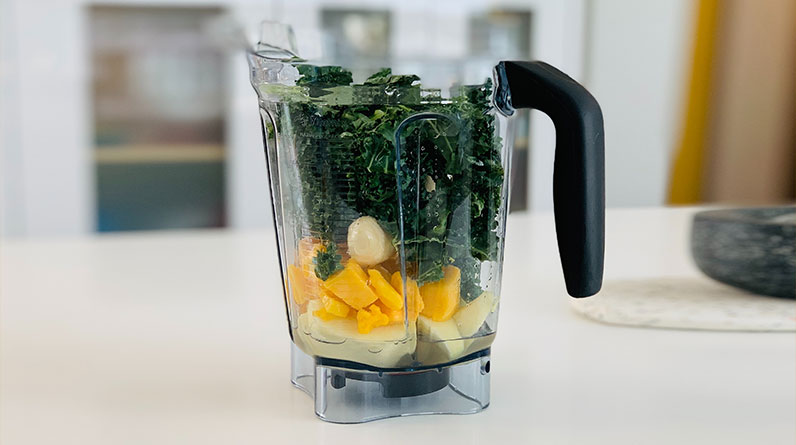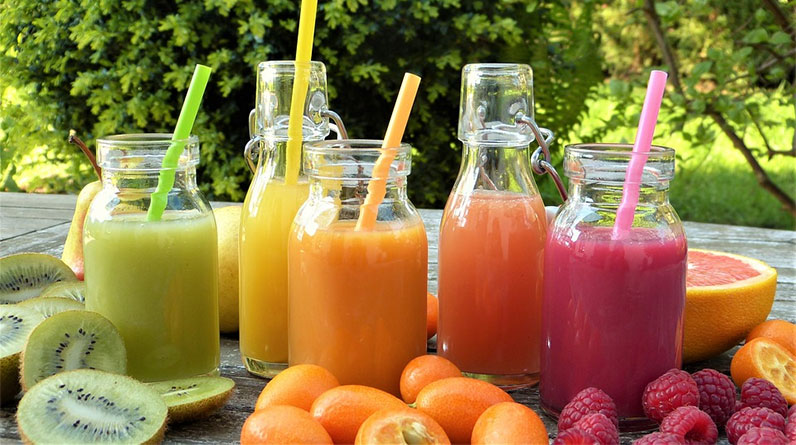
The Difference Between Juicing and Blending
When you are trying to lose weight or eat more healthily, juicing and blending may seem like two pretty similar options. Both involve using a manual device to process your fruits and vegetables so that they have fewer calories and can be easily digested by your body.
The main difference is that with blending, your fruits and veggies stay in their natural state, while with juicing, the pulp is removed from the juice. So which one is better?
Both juicing and blending are great for helping you get more raw fruits and vegetables in your diet. They are also easier than eating them whole, but one is probably slightly better for you than the other.
To help you make the best choice for your body, we’ve broken down everything you need to know about juicing vs. blending your food below:
What’s the difference between juicing and blending?
Although they’re both widely used to help people eat healthier and lead healthier lifestyles, there are a few key differences between juicing and blending your food:
Blending: Blending is the process of chopping up fruits and veggies and mixing them together into a smoothie-like consistency. There are no traces of the pulp. Everything is mixed together into one drink. Blending is a great way to sneak more fruits and veggies into your diet if you don’t like chewing them.
It also makes it easier for your body to process the nutrients since it’s all mixed together in one drink. Blending is also great for people who are juicing to treat a medical condition like anemia or iron deficiency.
Juicing: Juicing is the process of removing the pulp from fruits and vegetables and then drinking the juice. The fibrous pulp is left behind, making it less nutritious than blending (though it does contain some of the skin’s minerals and vitamins).
Juicing is a great way to get a concentrated dose of vitamins and minerals from fruits and veggies. Juicing is also a great option if you’re juicing to treat a medical condition such as kidney stones or gout.
Juicing vs. Blending: The nutrients
There are a few key differences when it comes to nutrients when comparing juicing to blending.
Blending: Blending fruits and veggies together helps your body more easily absorb their nutrients. This is because blending breaks down the cell walls that contain the nutrients, making them easier for your body to digest and use.
Juicing: Juicing, on the other hand, actually removes these nutritious parts of fruits and veggies. This is because the pulp is left behind in the juice, while the nutrients are extracted and then kept in the juice.
This means that juicing actually has fewer nutrients than blending. However, juicing does have one major advantage over blending: it usually results in more vitamins A and C. These are fat-soluble vitamins that are essential for your body to function properly. Juicing also makes it easier and faster to consume.
Juicing vs. Blending: The weight loss benefits
Blending: Blending is great for helping you lose weight because it boosts your metabolism. The more you blend fruits and veggies, the more energy your body uses up at a cellular level.
Blending is also helpful for those who are counting calories. Because you’re mixing all of the fruit or veggies together, the calories from different ingredients are averaged out.
Juicing: Juicing has been proven to help you lose weight as well — but not as much as blending. Blending breaks down the cell walls of the fruits and veggies, releasing the nutrients your body needs.
This boosts your metabolism, which in turn helps your body burn more calories. Juicing, however, doesn’t break down the cell walls, so your body can’t absorb the nutrients as easily. Because of this, juicing is less helpful for weight loss than blending.
Juicing vs. Blending: The taste
Blending: Blending is great for getting more vitamins, minerals, and antioxidants into your diet and boosting your metabolism, but it’s not so great for the taste. Since you’re mixing everything together, it can make it hard to tell what you’re actually drinking.
Juicing: Juicing is like taking a step towards flavor perfection. You can use a wide variety of different fruits and vegetables to create a personalized juice that’s perfect for your taste buds.
Blending: If you don’t like the taste of vegetables or prefer fruity flavors, juicing is definitely the better option for you. Juicing doesn’t taste like vegetables at all, but blending can taste a bit like grass if the ratio of vegetables is too high. Blending is also great for people who don’t like chewing fruits and veggies — it makes it easier.
Juicing vs. Blending: The final verdict
Juicing is a great way to get a concentrated dose of vitamins and minerals from fruits and vegetables. It also helps you lose weight because it boosts your metabolism.
Blending is great for getting more vitamins and minerals into your diet as well. It is also helpful for weight loss, but not as much as juicing. Blending is also great because it’s easier than juicing, and it’s cheaper (especially if you don’t own a juicer).
Both juicing and blending are great for helping you get more raw fruits and veggies in your diet. They are also easier than eating them whole — but one is probably slightly better for you than the other.



